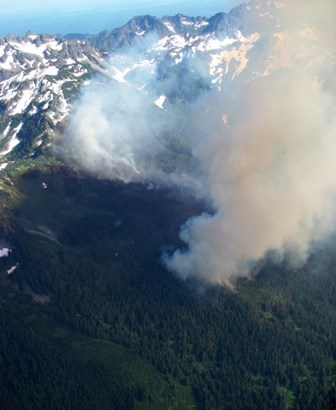
NPS photo Since the federal government began suppressing wildfires in the early 1900's, fire management policy has evolved with technology and our understanding of fire ecology. Wildland fires are managed under a sophisticated organization that looks at each fire's conditions individually when deciding how to respond. While firefighter and public safety are always the top priority, the ecological effects and benefits are also important considerations, especially in wilderness areas. Forest fires can be either planned or unplanned. Planned, or prescribed, fires are implemented for fuels and/or resource benefit objectives. At Olympic National Park, prescribed fire for restoration is not used because fire suppression by humans has not significantly altered the ecosystem to the degree that it has in other parts of the country where fires used to occur more frequently. However, prescribed fire is used for research in some cases to better understand the effects of fire on forest ecosystems and wildlife habitat. Unplanned fires include those ignited by natural causes (like lightning) and by humans (like campfires) and are generally dealt with in two different ways: Fire Suppression Fire Management A wildland fire may be managed for one or more objectives, which can change as the fire spreads. Changes in fuels, weather, topography, public use issues, other fires affecting resource availability and numerous other factors can lead to new or different objectives. New National Park service policy allows different sections of a single fire to be managed in different ways. For instance, if the east side of a fire is threatening to spread to private property, while the west side is providing ecological benefits, fire managers can suppress the east side while allowing the west to spread naturally. The right response may mean anything from monitoring a fire that is helping the landscape to aggressively suppressing a wildfire that threatens people, homes or important resources. Management response to a wildland fire on public land is based on objectives established in the applicable land, resource and/or fire plan, and is meant to maximize public safety and ecological benefit. In order to protect developments in the fire interface between public and private lands, forest thinning is used to reduce the fuels to temper the fire behavior so that if there is a fire, engines and firefighters have a better chance of being successful in protecting structures. Check out the following links for more information on wildland fire management policy: |
Last updated: April 9, 2025
